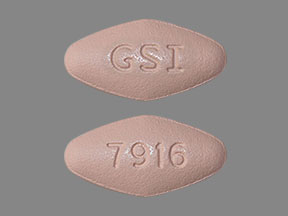Epclusa Side Effects
Generic name: sofosbuvir / velpatasvir
Note: This document contains side effect information about sofosbuvir / velpatasvir. Some dosage forms listed on this page may not apply to the brand name Epclusa.
Applies to sofosbuvir / velpatasvir: oral packet, oral tablet.
Warning
Oral route (Tablet)
Test all patients for evidence of current or prior hepatitis B virus (HBV) infection before initiating treatment with sofosbuvir/velpatasvir. HBV reactivation has been reported in HCV/HBV coinfected patients who were undergoing or had completed treatment with HCV direct acting antivirals and were not receiving HBV antiviral therapy. Some cases have resulted in fulminant hepatitis, hepatic failure, and death. Monitor HCV/HBV coinfected patients for hepatitis flare or HBV reactivation during HCV treatment and post-treatment follow-up. Initiate appropriate patient management for HBV infection as clinically indicated.
Serious side effects of Epclusa
Along with its needed effects, sofosbuvir / velpatasvir may cause some unwanted effects. Although not all of these side effects may occur, if they do occur they may need medical attention.
Check with your doctor immediately if any of the following side effects occur while taking sofosbuvir / velpatasvir:
Incidence not known
- Chest pain or discomfort
- large, hive-like swelling on the face, eyelids, lips, tongue, throat, hands, legs, feet, or sex organs
- lightheadedness, dizziness or fainting
- skin rash, sometimes with blisters or hive-like swelling
- slow or irregular heartbeat
- trouble breathing
- unconsciousness
- unusual tiredness
Other side effects of Epclusa
Some side effects of sofosbuvir / velpatasvir may occur that usually do not need medical attention. These side effects may go away during treatment as your body adjusts to the medicine. Also, your health care professional may be able to tell you about ways to prevent or reduce some of these side effects.
Check with your health care professional if any of the following side effects continue or are bothersome or if you have any questions about them:
More common
- Headache
- unusual tiredness or weakness
Less common
- Diarrhea
- discouragement
- feeling sad or empty
- irritability
- lack of appetite, nausea
- lack or loss of strength
- loss of interest or pleasure
- rash
- trouble concentrating
- trouble sleeping
For Healthcare Professionals
Applies to sofosbuvir / velpatasvir: oral pellet, oral tablet.
General
The most common side effects reported with this drug were fatigue, headache, nausea, and nasopharyngitis. When this drug was studied with ribavirin, the most common side effects were fatigue, anemia, nausea, headache, insomnia, and diarrhea.
The most common side effects in liver transplant recipients (without cirrhosis or with compensated cirrhosis) were headache, fatigue, nausea, diarrhea, and asthenia.
The most common side effect in patients with hepatitis C virus (HCV) with compensated liver disease (with or without cirrhosis) and end-stage renal disease requiring dialysis was nausea.
If this drug is used with ribavirin, the manufacturer product information for ribavirin should be consulted for associated side effects.[Ref]
Other
Very common (10% or more): Fatigue (up to 32%)
Common (1% to 10%): Asthenia, irritability[Ref]
Nervous system
Very common (10% or more): Headache (up to 29%)[Ref]
Hematologic
Very common (10% or more): Anemia (26%), decreased hemoglobin (up to 23%)[Ref]
Decreases in hemoglobin to less than 10 g/dL and 8.5 g/dL during combination therapy were reported in 23% and 7% of subjects, respectively.[Ref]
Gastrointestinal
Isolated, asymptomatic lipase elevations (greater than 3 times the upper limit of normal [3 x ULN]) were reported in up to 6% of subjects.
Vomiting and spitting up the drug was reported in 15% and 10% of pediatric patients younger than 6 years (n=41), respectively.[Ref]
Very common (10% or more): Nausea (up to 15%)
Common (1% to 10%): Diarrhea, increased lipase
Frequency not reported: Vomiting, spitting up the drug[Ref]
Respiratory
Very common (10% or more): Nasopharyngitis (up to 12%)
Common (1% to 10%): Cough
Psychiatric
Very common (10% or more): Insomnia (up to 11%)
Uncommon (0.1% to 1%): Depressed mood[Ref]
Cardiovascular
Severe bradycardia and heart block have been reported when sofosbuvir-containing regimens were used in combination with amiodarone and/or other agents that lower heart rate.
Serious symptomatic bradycardia has been reported in patients taking amiodarone who started therapy with a regimen containing sofosbuvir.[Ref]
Frequency not reported: Severe bradycardia, heart block
Postmarketing reports: Serious symptomatic bradycardia (including fatal cardiac arrest, cases requiring pacemaker intervention)[Ref]
Dermatologic
Common (1% to 10%): Rash
Frequency not reported: Stevens-Johnson syndrome
Postmarketing reports: Skin rashes (sometimes with blisters or angioedema-like swelling), angioedema[Ref]
Musculoskeletal
Common (1% to 10%): Back pain, arthralgia, increased creatine kinase[Ref]
Isolated, asymptomatic creatine kinase elevations (at least 10 x ULN) were reported in up to 2% of subjects.[Ref]
Hepatic
Frequency not reported: Increased indirect bilirubin[Ref]
Increased indirect bilirubin (up to 3 mg/dL above baseline) was reported in HIV-1/HCV-coinfected patients using this drug and an atazanavir/ritonavir-based antiretroviral regimen.[Ref]
Frequently asked questions
- What is the difference between hepatitis B and C?
- What are the new drugs for the treatment of hepatitis C?
- What is the best time of day to take Epclusa?
- Does Epclusa work if you miss doses?
- How much does Epclusa cost?
- How long is an Epclusa treatment?
- Does Epclusa cure Hep C, what is the success rate?
- How long does Epclusa stay in your system?
- Can you drink alcohol while taking Epclusa?
More about Epclusa (sofosbuvir / velpatasvir)
- Check interactions
- Compare alternatives
- Pricing & coupons
- Reviews (383)
- Drug images
- Dosage information
- Patient tips
- During pregnancy
- Support group
- FDA approval history
- Drug class: antiviral combinations
- En español
Patient resources
Professional resources
Related treatment guides
References
1. Cerner Multum, Inc. UK Summary of Product Characteristics.
2. Cerner Multum, Inc. Australian Product Information.
3. Product Information. Epclusa (sofosbuvir-velpatasvir). Gilead Sciences. 2016.
Further information
Always consult your healthcare provider to ensure the information displayed on this page applies to your personal circumstances.
Some side effects may not be reported. You may report them to the FDA.

